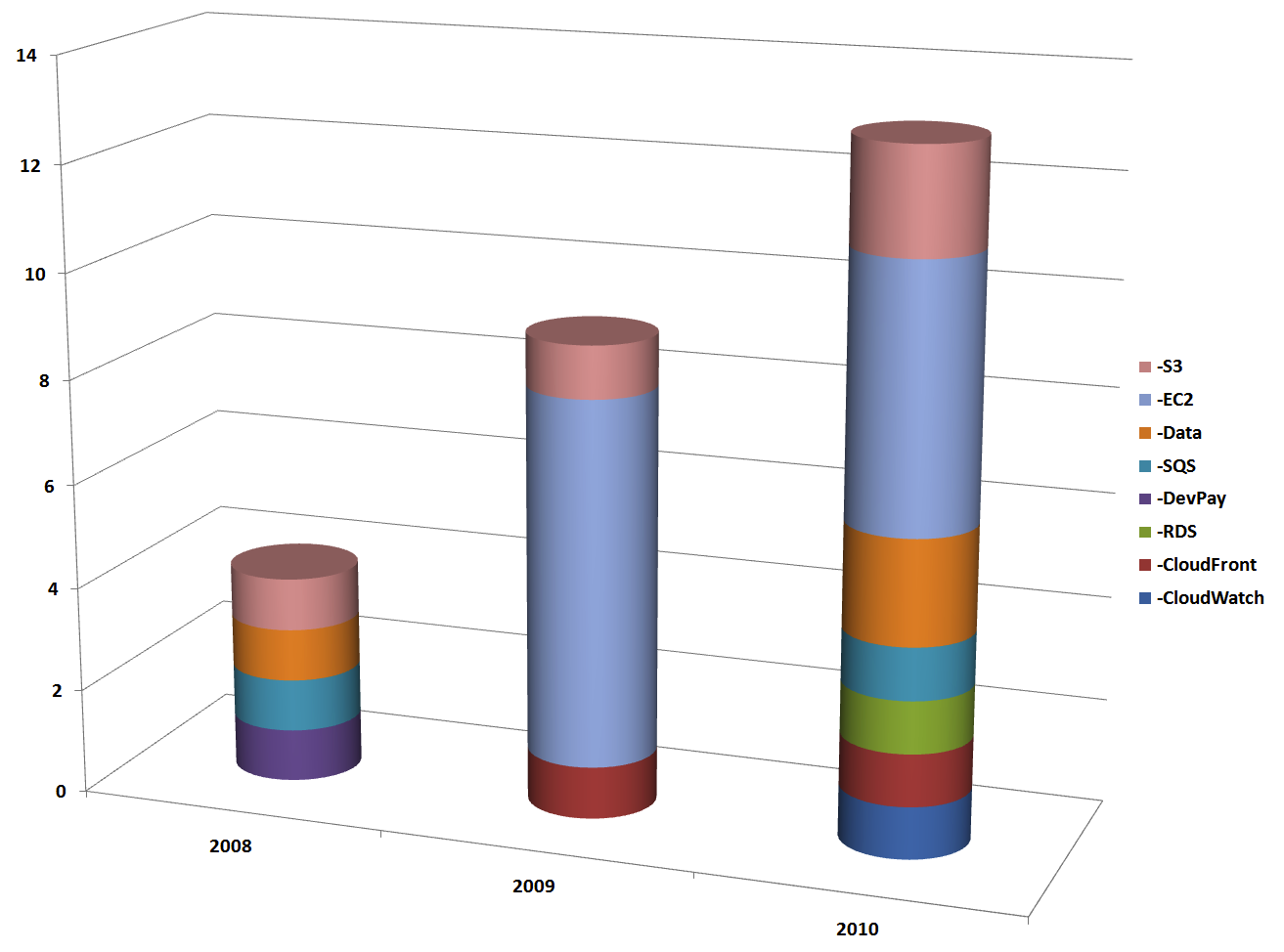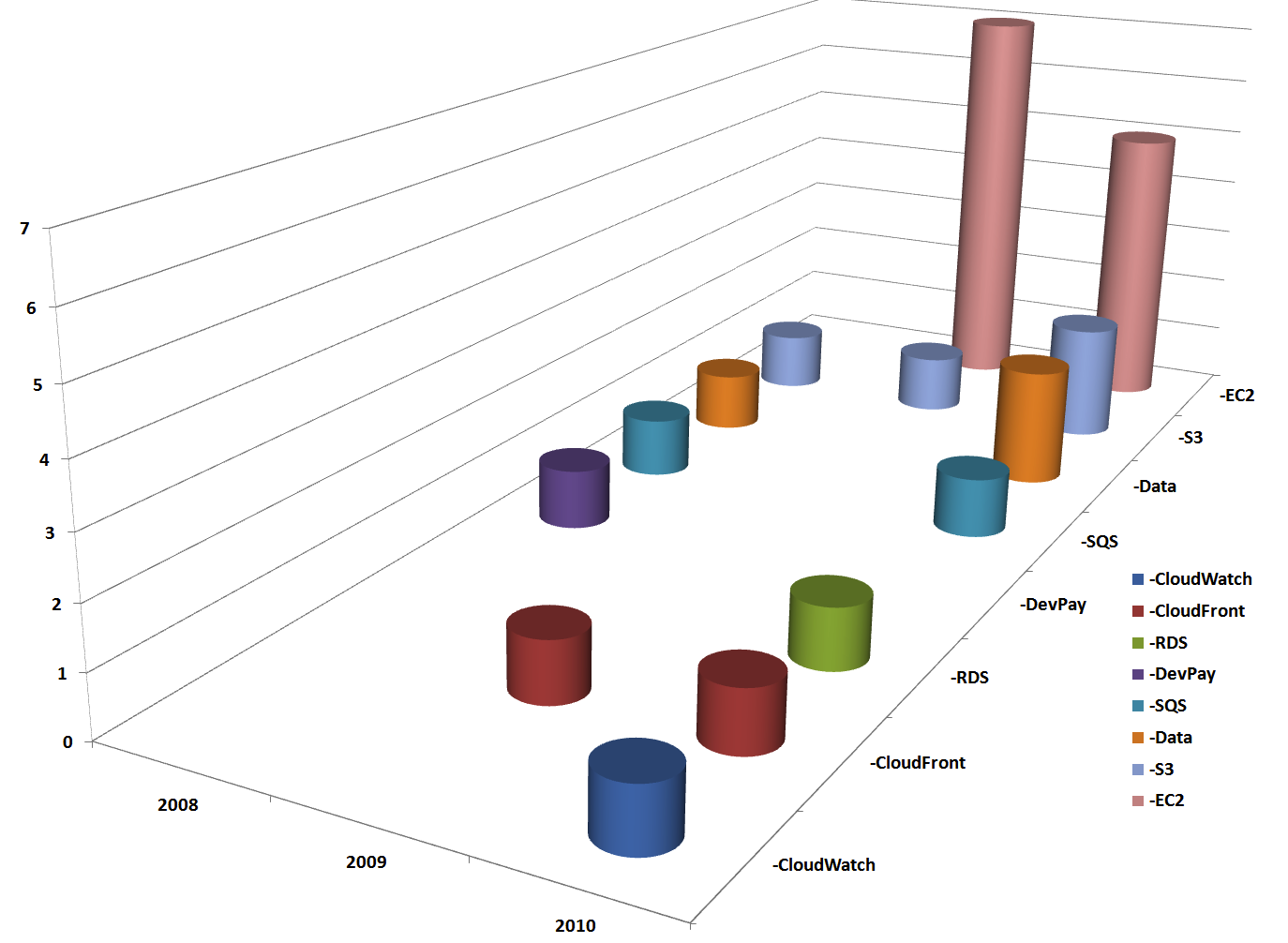AWS Feature Releases, Enterprise Clouds, and Legacy App Adoption
A couple of weeks ago I posted about Amazon’s continued rapid release cycle and tallied up their releases by year. I think it’s even more interesting to look at where these feature releases are happening by service.
The stacked graph by service is as follows (click through for full size image):
And here is a slightly different view that unpacks the various services a bit:
Obviously the EC2 service, which encapsulates a number of sub-services (e.g. ELB, EBS, Elastic IP), has the lion’s share of updates, but every service is being touched on a regular basis.
Perhaps most importantly, in 2010, every single service had significant feature updates and releases. This, I think, is the crux of one of Amazon’s key competitive advantages. A fast-firing multi-service release cycle that allows them to continue to plow ahead of others in the market place.
In my Cloud Connect 2011 Keynote, I panned the so-called “enterprise cloud” model for building clouds. This is the model epitomized by traditional (I prefer “legacy”) enterprise vendors who are trying to help cloud service providers capture the non-existent legacy application outsourcing market.
Perhaps enterprise clouds will ultimately be successful, but can anyone really see a legacy enterprise vendor providing this level of release cycle across 10+ services on a monthly, quarterly, or annual basis? It requires a whole different kind of DNA; the kind we see in large web/Internet operators and cloud pioneers such as Amazon and Google.
Meantime, AWS continues to release feature after feature that reduce the impedance mismatch for legacy applications to adopt their cloud. Mark my words, while greenfield apps are driving AWS today, legacy apps will eventually need clouds to move to and I suspect that by the time we see mass adoption (2-3 years out most likely) AWS will be as attractive a target as an ‘enterprise cloud’, but at a fraction of the price.

